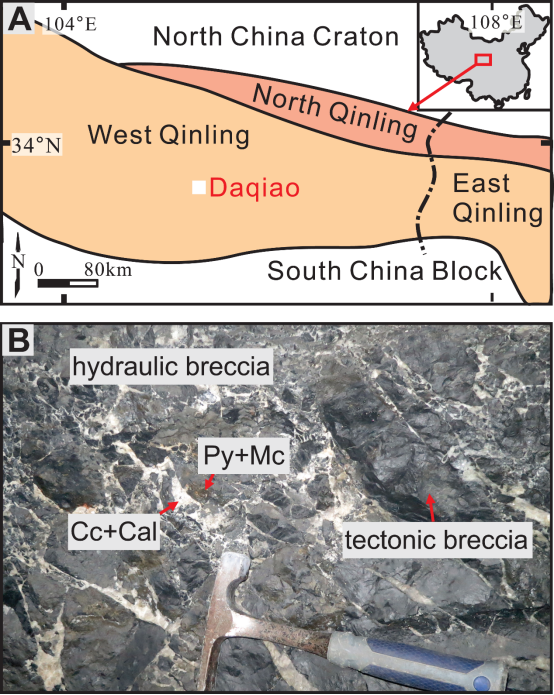“Gold, Arsenic, and Copper Zoning in Pyrite: A Record of Fluid Chemistry and Growth Kinetics” is published inGeologyand available online on May 2. It is an achievement of Prof. LI Jianwei from the School of Earth Resources and State Key Laboratory of Geological Processes and Mineral Resources. The first author is WU Yafei, doctoral student jointly educated by CUG and Curtin University, and Prof. LI is the corresponding author.
Chemical zoning in minerals records fluid-rock interaction and crystal growth kinetics via texturally complex features, the genesis of which remains a subject of debate. Here, we combined nanoscale secondary ion mass spectrometry (NanoSIMS) and atom probe tomography to better characterize trace-element zoning in a gold (Au)–rich pyrite crystal from the Daqiao epizonal orogenic Au deposit, China. Observations on the micron to atomic scale were used to recognize the multiple processes and mechanisms that created the zoning. Chemically distinct, micron-scale concentric zones of pyrite formed in response to changing fluid composition in a dynamic hydraulic fracturing environment. At a smaller scale, within an Au-rich zone, sector zones of Au, As, and Cu at the micron to sub-micron scale were controlled by the structure of the crystal surface. Micron-scale patchy distribution of Au, As, and Cu and atomic-scale transitions from homogeneous to heterogeneous “island” arsenian pyrite formed as a consequence of heteroepitaxial Stranski-Krastanov growth. Nanoscale Au oscillatory zoning is interpreted as a consequence of diffusion-limited self-organization processes at the crystal-fluid interface. The multiple scales of observation enabled us to see how kinetically driven intrinsic processes interacted with extrinsic factors (e.g., pressure decreases) to produce the complexity in mineral zoning. Nanoscale heterogeneities in Au, As, and Cu present as solid solution in pyrite suggest that interpretation of spikes on microbeam-derived depth-concentration profiles as metallic particles should be treated with caution.

Figure 1. A: Simplified geological map of geotectonic terranes in Qinling orogen and location of Daqiao gold deposit, China (white box). B: Representative photograph showing tectonic and hydraulic breccias at Daqiao deposit. Cal—chalcedony; Cc—calcite; Mc—marcasite; Py—pyrite.

Figure 2. Backscattered-electron images (A, B, F, and H), and nanoscale secondary ion mass spectrometry (NanoSIMS) elemental mapping (C–E, G, and I; in counts) of Daqiao pyrite. Bright mantle zone in A contains high Au and As concentrations (143 ppm and 5391 ppm, respectively, determined by laser ablation–inductively coupled plasma–mass spectrometry; Wu et al., 2018) relative to pyrite core and rim. Three regions analyzed by NanoSIMS (R1–R3) are indicated with white dashed boxes; locations of three atom probe tomography (APT) specimens (S1–S3) are shown in inset. Sector zoning is marked with red arrows. Scale bar is 5 μm.

Figure 3. A–C: As, Au, and Cu maps of atom probe tomography (APT) specimen 1 (A), specimen 2 (B), and specimen 3 (C). Each sphere represents one atom. Scale bar is 20 nm.
Full Text: https://doi.org/10.1130/G46114.1